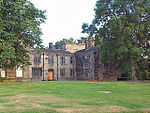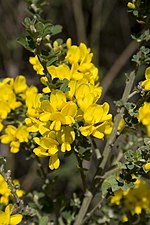Bowling Park, Bradford
English Heritage sites in West YorkshireEngvarB from November 2015Parks and commons in Bradford

Bowling Park is a public urban park near Bolling Hall in Bradford, West Yorkshire, England about 1+1⁄2 miles (2.4 km) south south east from the city centre. The park is irregularly shaped with an area of 50 acres (20 ha) and is bounded by Bowling Hall Road, Burras Road, Bowling Memorial Cemetery, Parkside Road, Avenue Road, Bowling Park Allotments and Bowling Park Drive (formerly New Hey Road).The park is grade II listed with English Heritage on their Register of Parks and Gardens of Special Historic Interest in England and is owned by the City of Bradford.
Excerpt from the Wikipedia article Bowling Park, Bradford (License: CC BY-SA 3.0, Authors, Images).Bowling Park, Bradford
Bowling Hall Road, Bradford West Bowling
Geographical coordinates (GPS) Address Nearby Places Show on map
Geographical coordinates (GPS)
| Latitude | Longitude |
|---|---|
| N 53.777 ° | E -1.741 ° |
Address
Bowling Hall Road
BD4 7LE Bradford, West Bowling
England, United Kingdom
Open on Google Maps








